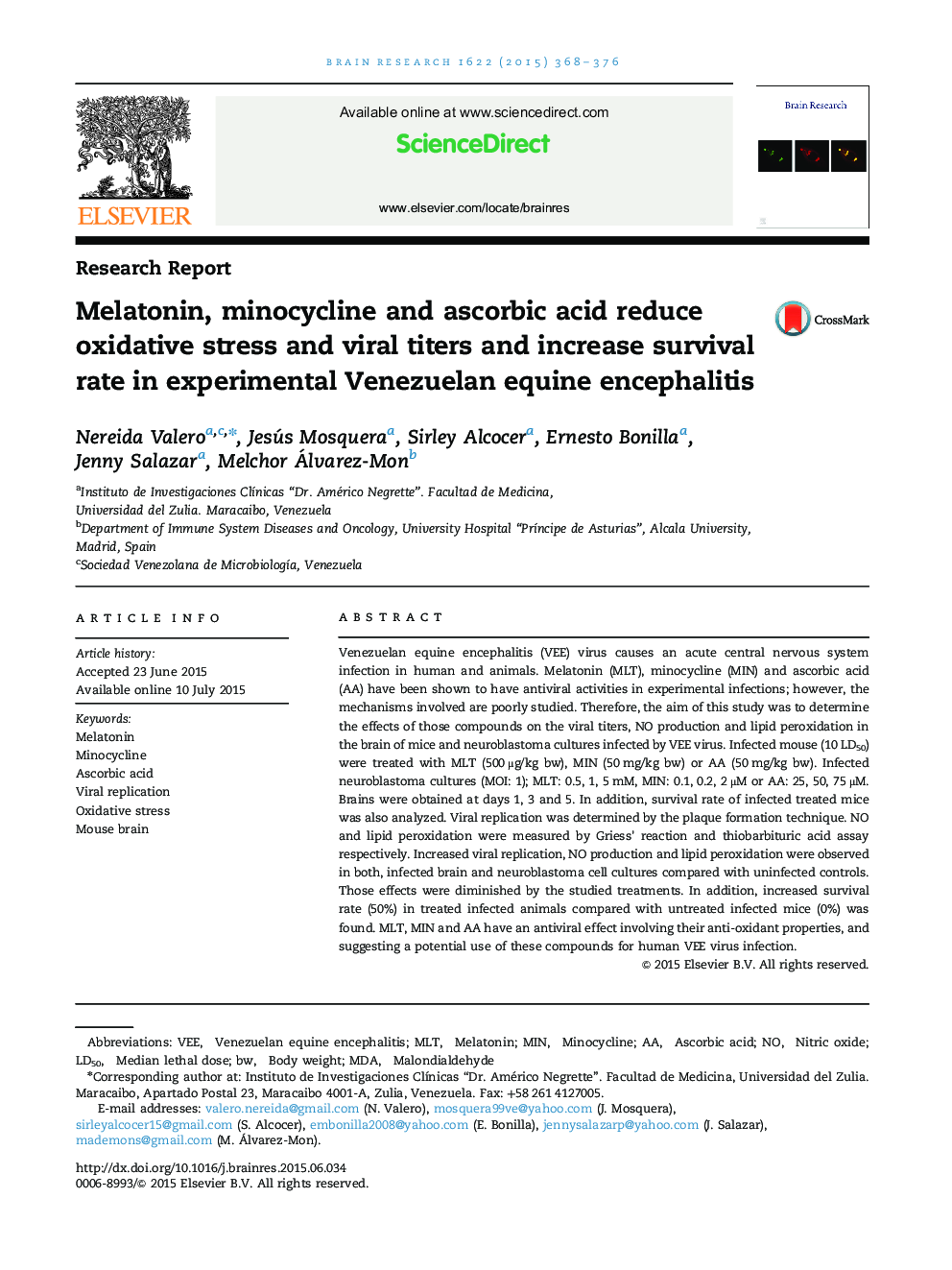| کد مقاله | کد نشریه | سال انتشار | مقاله انگلیسی | نسخه تمام متن |
|---|---|---|---|---|
| 6262962 | 1613817 | 2015 | 9 صفحه PDF | دانلود رایگان |
- VEE virus replicates and induces oxidative stress in mouse brain.
- VEE virus replicates and induces oxidative stress in neuroblastoma cell cultures.
- Melatonin, minocycline and ascorbic acid reduce those parameters.
- Those compounds have potential therapeutic use in VEE infection.
Venezuelan equine encephalitis (VEE) virus causes an acute central nervous system infection in human and animals. Melatonin (MLT), minocycline (MIN) and ascorbic acid (AA) have been shown to have antiviral activities in experimental infections; however, the mechanisms involved are poorly studied. Therefore, the aim of this study was to determine the effects of those compounds on the viral titers, NO production and lipid peroxidation in the brain of mice and neuroblastoma cultures infected by VEE virus. Infected mouse (10 LD50) were treated with MLT (500 μg/kg bw), MIN (50 mg/kg bw) or AA (50 mg/kg bw). Infected neuroblastoma cultures (MOI: 1); MLT: 0.5, 1, 5 mM, MIN: 0.1, 0.2, 2 μM or AA: 25, 50, 75 μM. Brains were obtained at days 1, 3 and 5. In addition, survival rate of infected treated mice was also analyzed. Viral replication was determined by the plaque formation technique. NO and lipid peroxidation were measured by Griess׳ reaction and thiobarbituric acid assay respectively. Increased viral replication, NO production and lipid peroxidation were observed in both, infected brain and neuroblastoma cell cultures compared with uninfected controls. Those effects were diminished by the studied treatments. In addition, increased survival rate (50%) in treated infected animals compared with untreated infected mice (0%) was found. MLT, MIN and AA have an antiviral effect involving their anti-oxidant properties, and suggesting a potential use of these compounds for human VEE virus infection.
Journal: Brain Research - Volume 1622, 5 October 2015, Pages 368-376
